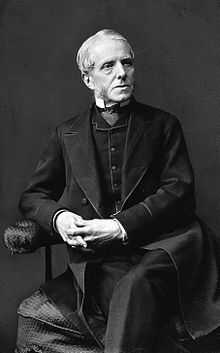Henry Littlejohn (surgeon born 1826)


Sir Henry Duncan Littlejohn (1826 – 30 September 1914) was a Scottish surgeon, forensic scientist and public health pioneer.
Life
Henry Littlejohn was born in Edinburgh in 1826 to Thomas Littlejohn and Isabella Duncan. He began his studies at the Perth Academy and the Royal High School, and continued them at the University of Edinburgh where he studied medicine, graduating with distinction in 1847.[1]
Littlejohn served as Edinburgh's first Medical Officer of Health (1862–1908), introducing model sanitation improvements and the legal requirement to notify cases of infectious diseases.[2] He contributed significantly to the public health movement in Edinburgh and to public health administration and also to urban management.[3][4] He co-founded the Royal Hospital for Sick Children in Edinburgh.[5]
Long a lecturer for the Royal College of Surgeons of Edinburgh at Surgeons' Hall, he was appointed to the Chair of Medical Jurisprudence at the University of Edinburgh in 1897.
Serving as Edinburgh's Police Surgeon from 1854 and as Medical Advisor to the Crown in Scotland in criminal cases, he was often called upon as an expert witness. From 1862 he was Edinburgh's first Medical Officer of Health.[6]
A kirk elder at the High Kirk of Edinburgh, Littlejohn filled several prominent posts in public life, including nine years on the board of the Royal Infirmary of Edinburgh, president of the Royal College of Surgeons of Edinburgh (1875–76), president of the Medico-Chirurgical Society of Edinburgh (1883–85), and president of the Royal Institute of Public Health (1893).
Although Arthur Conan Doyle primarily credited Joseph Bell as being the source of inspiration for his character Sherlock Holmes, he also cited Henry Littlejohn as being a contributing influence.[7] Henry Littlejohn, as a forensic expert involved in police investigations, appears to have been joined by Joseph Bell on several investigations; furthermore, Sir Henry taught Arthur Conan Doyle forensic medicine when Doyle was studying at the medical school of the University of Edinburgh.
Henry Littlejohn was knighted in 1895 by Queen Victoria.[8]
He died at Benreoch, Argyll in 1914, and was interred at the Dean Cemetery in Edinburgh.[9] His grave is on the edge of the southern path towards the west end. He is buried with his wife, Isabella Jane Harvey, and their children.
Henry Harvey Littlejohn
Sir Henry was the father of Henry Harvey Littlejohn (1862-1927) who followed in his father's footsteps and continued his adoption of tangential thinking to resolve investigations.
H.H.Littlejohn adopted unusual methods of study. This included mapping instances of typhoid across Edinburgh in 1891 in conjunction with the noted map-maker, J. G. Bartholomew. The purpose of this was to track down the source of the outbreak. This technique is now common practice in police techniques to observe patterns in pursuit of crime detection.
The results, published in the Edinburgh Medical Journal in March 1891, proved the outbreak centred upon a property at Gardners Crescent, in the west of the city, with almost all neighbouring houses becoming infected. He then tracked the original source to a batch of milk from one individual farm, tracked down all the shops which he supplied, and had all milk destroyed (compensating the shop-owners).[10]
He was one of the first persons in the world to be appointed as Chief Police Surgeon for a city (1906).
Henry Harvey is buried in his father's plot at Dean Cemetery.
References
- ↑ "Sir Henry Duncan Littlejohn: the beginning". Edinburgh City Archives. Retrieved 5 May 2014.
- ↑ "Sir Henry Duncan Littlejohn". Gazetteer for Scotland. Retrieved 3 February 2011.
- ↑ Laxton, Paul; Rodger, Richard (2013). Insanitary City: Henry Littlejohn and the Condition of Edinburgh. Carnegie Publishing Ltd. ISBN 1859362206.
- ↑ Gray, J. A. (1999). The Edinburgh City Hospital. Tuckwell Press. ISBN 1862320969.
- ↑ "The Littlejohn Collection". Royal College of Surgeons of Edinburgh Library & Archive. Retrieved 3 February 2011.
- ↑ Edinburgh: Mapping the City by Christopler Fleet and Daniel MacCannell
- ↑ Doyle, A. Conan (1961). The Boys' Sherlock Holmes, New & Enlarged Edition. Harper & Row. p. 88.
- ↑ "Sir Henry Duncan Littlejohn: Wider impact of his work". Edinburgh City Archives. Retrieved 1 May 2014.
- ↑ "SIR HENRY D. LITTLEJOHN, M.D., LL.D.Edin., F.R.C.S.E". BMJ 2 (2806): 648. 1914. doi:10.1136/bmj.2.2806.648-b. PMC 2299842.
- ↑ Edinburgh: Mapping the City, Christopher Fleet and Daniel MacCannell